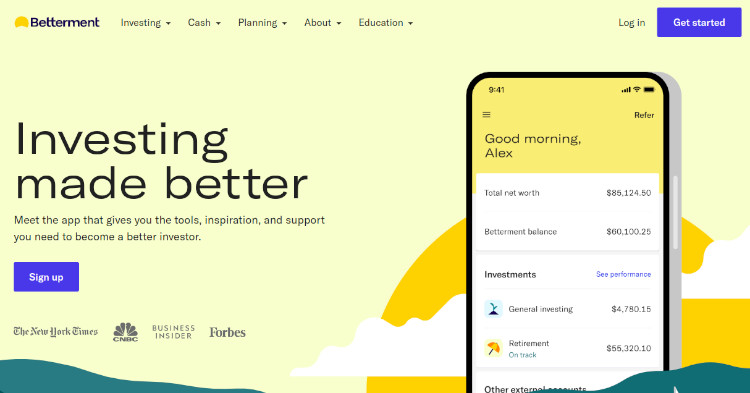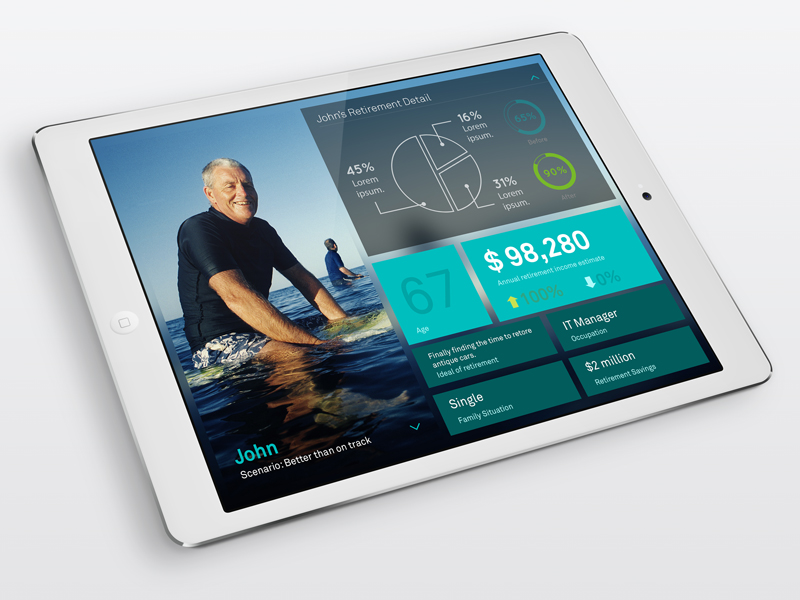Retirement Planning Apps: A Guide to Navigating Your Financial Future
Retirement planning apps are revolutionizing the way individuals prepare for their financial future, offering a convenient and accessible platform to manage savings, investments, and retirement goals.
These apps provide a comprehensive suite of features that empower users to track progress, make informed decisions, and maximize their retirement income.
Introduction to Retirement Planning Apps
Retirement planning apps are software applications designed to assist individuals in planning and managing their financial future, specifically for their retirement years. These apps offer various features to help users track their retirement savings, project their future income and expenses, and make informed decisions about their investments.
The popularity of retirement planning apps has surged in recent years, as more and more people recognize the importance of planning for their financial well-being in retirement. According to a study by Cerulli Associates, the number of Americans using retirement planning apps increased by 25% between 2019 and 2021.
This growth is expected to continue as individuals become more aware of the benefits of these apps and the need to take control of their retirement planning.
Benefits of Retirement Planning Apps
- Convenience and Accessibility:Retirement planning apps are accessible 24/7 from any device with an internet connection, making it easy for users to manage their retirement planning on the go.
- Personalized Planning:These apps allow users to create personalized retirement plans based on their individual circumstances, goals, and risk tolerance.
- Real-Time Tracking:Retirement planning apps provide real-time updates on users’ retirement savings and investments, helping them stay on track with their goals.
- Investment Optimization:Some apps offer investment recommendations and portfolio management tools to help users optimize their retirement savings.
- Financial Education:Retirement planning apps often include educational resources and tools to help users understand complex financial concepts and make informed decisions.
Key Features of Retirement Planning Apps
Retirement planning apps provide a range of features to assist individuals in planning for their financial future. These features include:
- Goal setting:Retirement planning apps allow users to set financial goals for retirement, such as a target retirement age, desired retirement income, and lifestyle expectations. These goals help users create a roadmap for their retirement planning.
- Budgeting and tracking:These apps offer budgeting and tracking tools to help users manage their income and expenses. By tracking their spending, users can identify areas where they can save money and make adjustments to their budget.
- Investment tracking:Retirement planning apps provide investment tracking features that allow users to monitor the performance of their retirement investments. This information helps users make informed decisions about their investments and adjust their strategy as needed.
- Tax optimization:Some retirement planning apps offer tax optimization features that help users minimize their tax liability. These features can include tax-loss harvesting, retirement account contributions, and tax-efficient investment strategies.
- Scenario planning:Retirement planning apps allow users to run different scenarios to test the impact of different assumptions on their retirement goals. This feature helps users make informed decisions about their retirement plans and prepare for unexpected events.
Examples of Retirement Planning Apps
Several retirement planning apps offer a range of features to help users plan for their financial future. Some popular examples include:
- Vanguard Retirement Planner:This app offers goal setting, budgeting, investment tracking, and tax optimization features.
- Fidelity Retirement Planner:This app provides goal setting, budgeting, investment tracking, and scenario planning features.
- Personal Capital Retirement Planner:This app offers budgeting, investment tracking, and tax optimization features.
Types of Retirement Planning Apps

Retirement planning apps can be categorized based on their target audience or functionality. Here are some common types of retirement planning apps:
General Retirement Planning Apps:These apps are designed for individuals of all ages and income levels who want to start planning for retirement. They typically offer a range of features, including retirement calculators, investment tracking, and budgeting tools.
Employer-Sponsored Retirement Planning Apps:These apps are offered by employers as a benefit to their employees. They typically provide access to employer-sponsored retirement plans, such as 401(k)s and 403(b)s, and may also offer additional features, such as investment advice and financial planning tools.
Robo-Advisor Retirement Planning Apps:These apps use algorithms to create and manage retirement portfolios for users. They typically offer low fees and are a good option for individuals who want a hands-off approach to retirement planning.
Financial Advisor Retirement Planning Apps:These apps provide access to financial advisors who can help users create and manage retirement plans. They typically offer a higher level of personalized service than robo-advisor apps but also come with higher fees.
Each type of retirement planning app has its own advantages and disadvantages. General retirement planning apps are a good option for individuals who want a basic level of retirement planning support. Employer-sponsored retirement planning apps are a good option for individuals who want access to their employer’s retirement plans. Robo-advisor retirement planning apps are a good option for individuals who want a hands-off approach to retirement planning. Financial advisor retirement planning apps are a good option for individuals who want a high level of personalized service.
Benefits of Using Retirement Planning Apps

Retirement planning apps offer numerous advantages over traditional methods, empowering individuals to take control of their financial future. These apps simplify complex financial concepts, making it easier for users to understand their retirement goals and track their progress.
Increased Financial Literacy
Retirement planning apps provide educational resources and personalized insights, enhancing users’ financial literacy. They offer explanations of retirement-related concepts, investment strategies, and tax implications, enabling individuals to make informed decisions about their retirement savings.
Personalized Retirement Plans
These apps create tailored retirement plans based on individual circumstances, such as age, income, expenses, and risk tolerance. By considering these factors, the apps generate customized recommendations and projections, helping users optimize their retirement savings and investment strategies.
Data-Driven Insights
Retirement planning apps leverage data and analytics to provide insights into users’ financial situation. They track spending habits, analyze investment performance, and forecast future retirement income. This data-driven approach helps users identify areas for improvement and make adjustments to their plans as needed.
Convenience and Accessibility
Retirement planning apps are accessible 24/7, allowing users to manage their finances on the go. They provide real-time updates on account balances, investment performance, and retirement projections. This convenience empowers individuals to stay informed and make timely decisions about their retirement savings.
Empowerment and Control
By providing personalized insights and actionable recommendations, retirement planning apps empower individuals to take control of their financial future. They encourage users to actively participate in the planning process, fostering a sense of ownership and accountability. This leads to increased financial confidence and a more secure retirement outlook.
Considerations When Choosing a Retirement Planning App: Retirement Planning Apps
When selecting a retirement planning app, consider the following key factors:
Fees:Determine if the app charges any fees, such as subscription costs, transaction fees, or account management fees. These fees can impact your overall retirement savings.
Security Measures:Ensure the app implements robust security measures to protect your financial information, such as encryption, two-factor authentication, and data privacy protocols.
User Interface:The app’s user interface should be intuitive and easy to navigate. Consider factors such as the app’s design, organization, and ease of use.
Evaluating Accuracy and Reliability
To evaluate the accuracy and reliability of app recommendations, consider the following:
Data Sources:Check if the app uses reputable data sources, such as government agencies, financial institutions, or research firms. These sources provide reliable and up-to-date information.
Methodology:Understand the methodology used by the app to generate recommendations. Transparent and well-defined methodologies enhance the credibility of the app’s advice.
Personalization:The app should allow you to customize your inputs and assumptions to reflect your specific financial situation and retirement goals. This personalization ensures tailored recommendations.
Future Trends in Retirement Planning Apps

The retirement planning app industry is constantly evolving, with new trends and innovations emerging all the time. These trends are being driven by the increasing popularity of mobile devices, the growing sophistication of artificial intelligence (AI), and the increasing demand for personalized retirement planning advice.
One of the most significant trends in retirement planning apps is the use of AI and machine learning. These technologies can be used to automate many of the tasks that are traditionally performed by financial advisors, such as asset allocation and risk management.
This can make retirement planning more accessible and affordable for everyone.
Personalized Recommendations
Another important trend in retirement planning apps is the increasing use of personalized recommendations. These recommendations can be based on a variety of factors, such as your age, income, risk tolerance, and investment goals. By providing personalized recommendations, retirement planning apps can help you make better decisions about your retirement savings.
Potential Advancements
There are a number of potential advancements that could further enhance the user experience and retirement outcomes of retirement planning apps. These advancements include:
- The use of AI to provide real-time advice on investment decisions.
- The use of machine learning to identify and predict retirement risks.
- The use of gamification to make retirement planning more engaging and fun.
- The use of blockchain technology to secure retirement savings.
These advancements have the potential to revolutionize the way that people plan for retirement. By making retirement planning more accessible, affordable, and personalized, these apps can help people achieve their retirement goals.
Ultimate Conclusion

Whether you’re a seasoned investor or just starting to think about retirement, retirement planning apps offer a valuable tool to help you achieve your financial goals and secure a comfortable future.
Query Resolution
What are the key features to look for in a retirement planning app?
Essential features include budgeting tools, investment tracking, retirement calculators, and personalized recommendations.
How do retirement planning apps help individuals prepare for retirement?
These apps provide insights into retirement savings progress, help users optimize their investments, and offer guidance on making informed financial decisions.
What are the benefits of using a retirement planning app compared to traditional methods?
Apps offer convenience, real-time updates, personalized recommendations, and the ability to track progress towards retirement goals.
